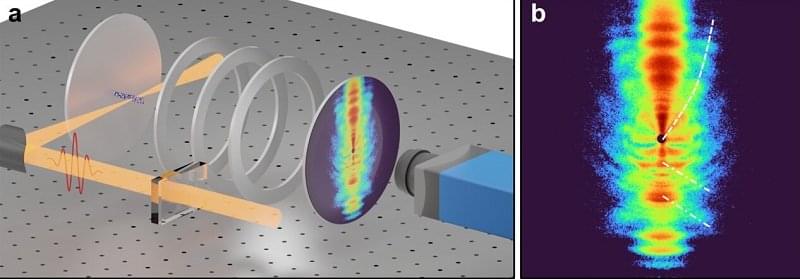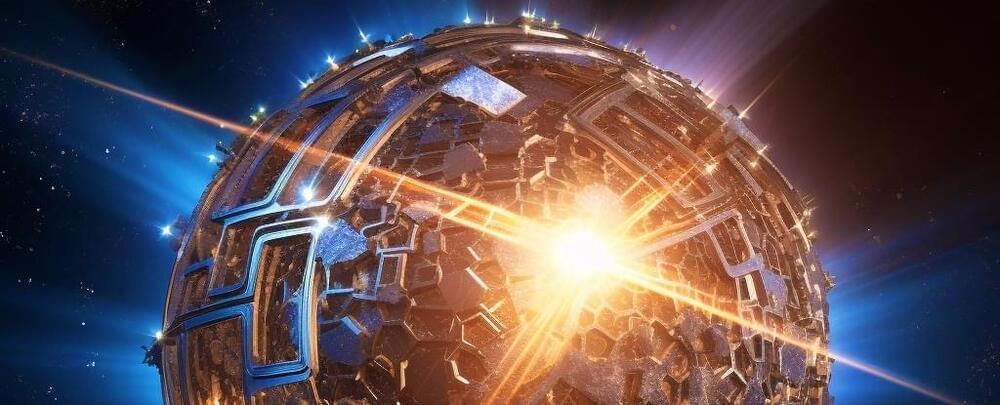A team of researchers, led by Professor Dong Eon Kim from Pohang University of Science and Technology and Professor X. Lai at the Innovation Academy for Precision Measurement Science and Technology, has made significant strides in ultrafast imaging. They have successfully observed two distinct holographic patterns—resembling spider legs and fishbones—within molecules for the first time. […].
A new article explores the physics behind the popular party trick of infinite mirrors, explaining why it may not actually create infinite reflections. While it may seem like a never-ending loop, the reality is that the reflections eventually become too faint to see. This phenomenon is a result of the way light behaves and can be explained by the laws of physics.
Only a few people stood by the open casket, with just a handful attending the funeral. There were so few attendees that you could count them on two hands. Two guys stood in a nearby parking lot, seeming eager to say their goodbyes. As the last person left the cemetery, they emerged from their car.
From May 3 through May 9, 2024, NASA’s Solar Dynamics Observatory observed 82 notable solar flares. The flares came mainly from two active regions on the Sun called AR 13,663 and AR 13664. This video highlights all flares classified at M5 or higher with nine categorized as X-class solar flares. ht.
On November 14, 2014, a telescope spotted a burst of light in a galaxy 570 million light-years away. It was thought to be a supernova, an arrestingly bright explosion that marks a star’s death. This week, astronomers revealed that the burst was not a supernova after all, but rather a black hole having dinner—one of…
NASA wants a cheaper Mars Sample Return—Boeing proposes most expensive rocketNASA is looking for a more cost-effective way to conduct a Mars Sample Return mission, and Boeing has proposed a new concept that involves only one launch. This could potentially reduce the complexity and cost of the mission. However, Boeing’s proposed rocket is also the most expensive option, so it remains to be seen if this concept will be chosen by NASA.
A new method quantifies quantum entanglement using normalized entanglement witnesses, enhancing the ability to measure entanglement across different scenarios. Prof. Sixia Yu, Associate Researcher Liangliang Sun, and Xiang Zhuo from the University of Science and Technology of China (USTC) of the.
Scientists have discovered remains of a hiker that could potentially be hundreds of years old. The remains were first found decades ago, and researchers are now working to determine the age and identity of the hiker. This discovery sheds light on the history of hiking and the potential for uncovering more ancient remains on popular hiking trails.
A recent study suggests that the near-collapse of the geomagnetic field during the Ediacaran period may have played a role in the diversification of life on Earth. This coincided with a significant increase in oxygen levels, which could have provided a favorable environment for the development of new species. The ultra-weak geomagnetic field may have allowed for increased solar radiation, leading to higher oxygen production through photosynthesis. This discovery sheds light on the potential impact of Earth’s magnetic field on the evolution of life.
Scientists have discovered mysterious objects in space that could potentially be giant Dyson Spheres, structures built by advanced civilizations to harness the energy of their stars. This discovery is both exciting and poetic, as it represents humanity’s ongoing search for other intelligent life in the vast expanse of the Milky Way. While the objects have not yet been confirmed as Dyson Spheres, the possibility alone is enough to spark curiosity and wonder about the potential for other civilizations in our universe.









